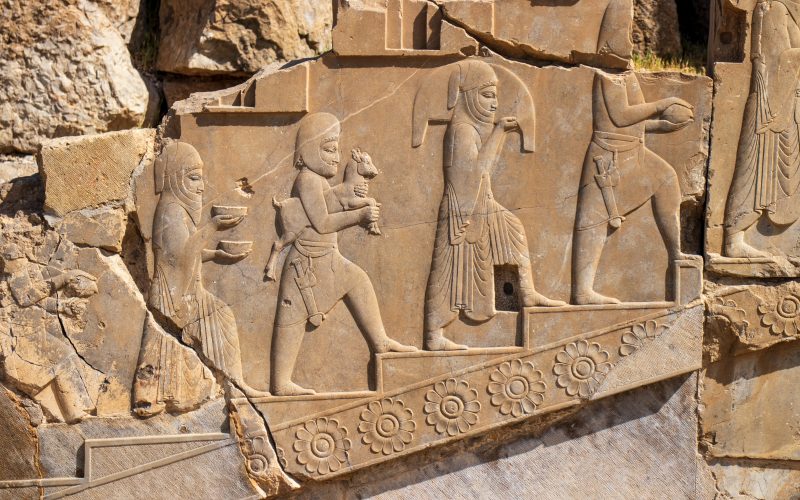From the earliest civilizations to modern times, law and society have been interwoven in a complex dance of evolution. The rules that govern our lives today have come a long way from their ancient counterparts, shaped by countless forces throughout history. To truly understand the present state of law and society, it’s essential to take a step back and examine how we got here. In this blog post, we’ll explore the fascinating historical perspective behind the evolution of law and society, tracing its path from antiquity through to contemporary times – with an eye towards what may lie ahead for us all in the future!
The Ancient World
The ancient world was a time of great innovation and transformation. In many ways, it was the birthplace of modern civilization as we know it today. One of the most significant developments during this time period was the emergence of legal codes.
In ancient Mesopotamia, for example, rulers developed complex legal systems to govern their societies. These early laws covered everything from property rights to trade regulations and were often inscribed on stone tablets for easy reference.
Similarly, in Egypt, pharaohs enacted laws that regulated various aspects of daily life such as marriage and inheritance – all with an eye towards maintaining social order.
Perhaps most famous among these ancient legal systems is Hammurabi’s Code – a set of laws developed by Babylonian King Hammurabi around 1754 BCE. This code governed everything from property disputes to criminal justice and is considered one of humanity’s earliest known written legal codes.
The evolution of law in the ancient world laid important groundwork for future advancements in law and society- paving the way for new ideas about justice and governance that would shape human history for centuries to come.
The Middle Ages
The Middle Ages, also known as the medieval period, was a time of great political and social change in Europe. The feudal system dominated society during this time, with lords and vassals forming the basis of economic relationships. This hierarchical structure greatly impacted the development of law.
At the beginning of the Middle Ages, Roman law still had some influence on legal systems in Europe. However, as feudalism grew stronger and monarchs gained more power, their own laws began to take precedence over Roman law.
During this era, trial by combat was a common method used to settle disputes between individuals. It was believed that God would intervene on behalf of the innocent party. However, as society became more civilized and centralized authority developed under monarchies, trial by combat slowly gave way to other methods such as jury trials.
The Church played a major role in shaping legal practices during this time period too. Canon law governed matters such as marriage and divorce while religious courts dealt with cases involving heresy or blasphemy.
The Middle Ages were characterized by significant changes in both societal structures and legal systems. The continued evolution of these factors set into motion events that would eventually lead to modern-day justice systems we know today.
The Contemporary Age
The Contemporary Age is characterized by rapid globalization, technological advancements and the emergence of new social movements. With these changes come new challenges for law and society.
One major challenge is how to regulate the use of technology in a way that protects individual rights while also promoting innovation. The rise of social media has brought about issues such as online privacy, cyberbullying and hate speech. Governments around the world are struggling to keep up with regulating these platforms.
Another issue facing contemporary law and society is increasing diversity and multiculturalism. Laws must be adapted to accommodate different cultural values, beliefs and practices in order to ensure equal treatment under the law for all citizens.
There is a growing need for environmental regulation as climate change becomes an increasingly pressing issue. The legal system must find ways to hold corporations accountable for their impact on the environment while also incentivizing sustainable practices.
The Contemporary Age presents numerous challenges for law and society that require innovative approaches to regulation and governance.
The Future of Law and Society
As we look towards the future, it’s clear that law and society will continue to evolve in response to changing circumstances. Technology, globalization, and demographic shifts are just a few of the factors that will shape our legal systems going forward.
One area of particular interest is the role of artificial intelligence (AI) in the practice of law. As algorithms become more sophisticated, they may be able to assist lawyers with tasks such as document review or even decision-making. However, this raises important questions about ethics and accountability.
Another key issue is access to justice. While many people around the world lack adequate legal representation or can’t afford costly court fees, technology has the potential to help bridge this gap through online dispute resolution platforms and other innovative solutions.
Ultimately, only time will tell what changes lie ahead for law and society. But one thing is certain: by studying our historical past and learning from our mistakes along the way, we can work together towards a brighter future for all members of society – both now and for generations to come.











